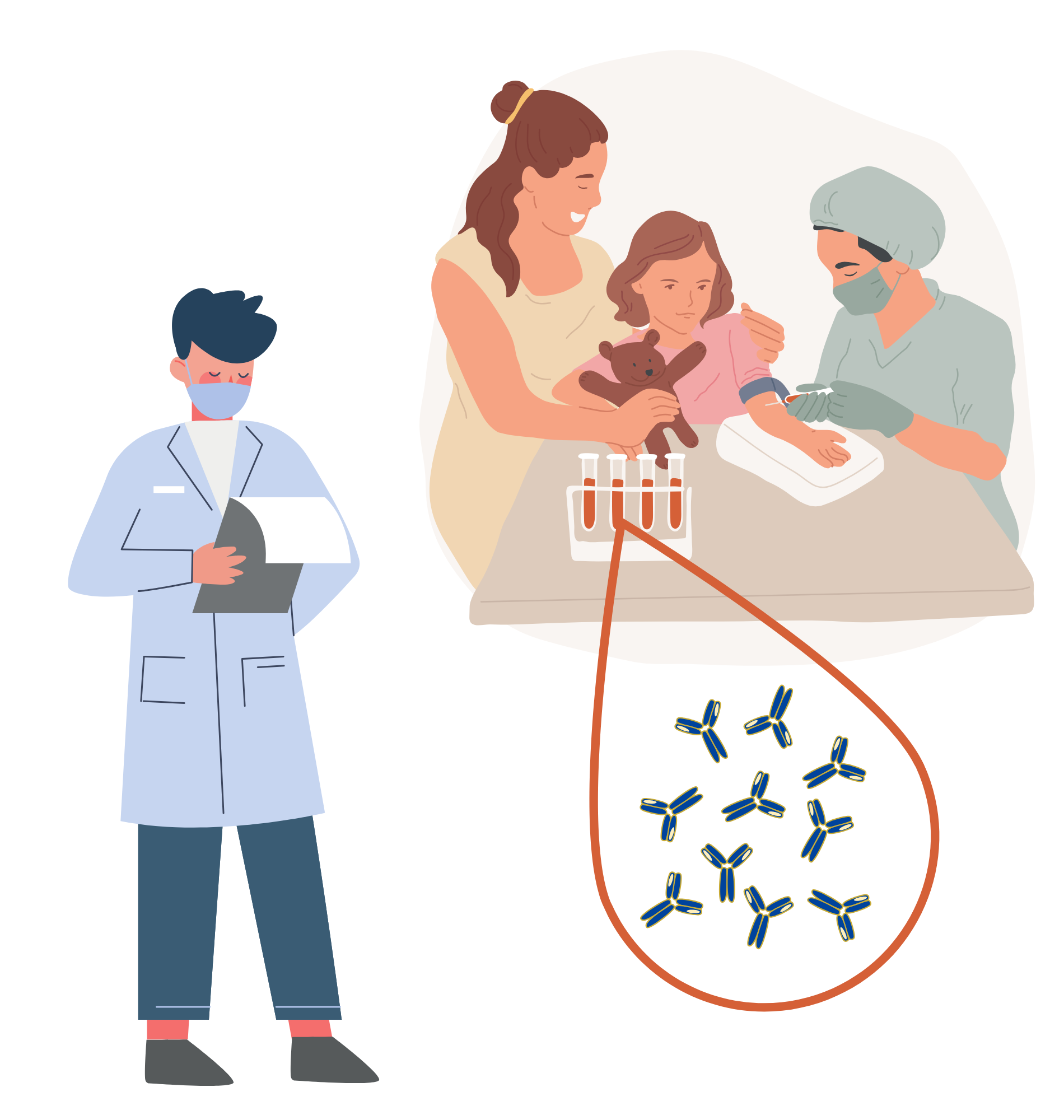Interested in Participating?
We are looking to confirm which tests available in Canada are the best to screen for risk of type 1 diabetes (T1D). Our researchers based at the University of Alberta and Stollery’s Children’s Hospital in Edmonton are looking for blood samples. To be able to provide us with this sample, you, or your child, should be:
- Under 18 years old, without diabetes and no family history of diabetes; OR
- Under 18 years old and living with T1D.
A blood sample will be taken from your finger and arm, and you will be asked to complete a brief questionnaire which will take about 15 minutes. If you are interested in participating, please contact:
- Dr. Albert Tsui: atsui@ualberta.ca
- Casey Brodie: cbrodie@ualberta.ca ; +1-780-492-9277
Scroll down to learn more about the study!
What Is This Project About?
This project is about finding the best way to test for the risk of Type 1 Diabetes in the Canadian population. We want to make sure doctors have a reliable way to test for T1D in newborns and children who might develop the condition. The tests will check for special markers (called antibodies) in the blood that are linked to T1D.
Markers are special substances in the blood that helps doctors study a health interest (sign of a health condition or process in the body). In this case, we are looking for antibodies, which are proteins made by the body when it is fighting a disease like T1D. If certain antibodies are found, it can be a sign that a person has or is at risk for T1D.
Why Is This Important?
We are looking for the best tests to use for the Canadian population. These include:
- ELISA (Enzyme-Linked Immunosorbent Assay): This test checks for 3 specific antibodies linked to T1D. In this test, a small amount of blood is added to a special plate with chemicals that can detect the antibodies. If the antibodies are present, they cause a color change, showing that the person may have T1D.
- ECL (Electrochemiluminescence): This test also checks for 4 antibodies linked to T1D. It uses a special machine that sends an electrical signal through the blood sample. If the antibodies are there, the machine detects them and gives a result.
- ADAP (Ab Detection by Agglutination-PCR): This test checks for 4 different antibodies linked to T1D. It works by mixing blood with special particles that will stick to the antibodies if they are present. The test then detects the particles and shows if the person has T1D-related antibodies.
These methods need to be tested to see if they work well for screening large groups of people. They will be compared to the “gold standard” test (the most reliable and accurate test currently available) to see if they give accurate results. We will also send samples to another laboratory at the University of Colorado to double-check the results.

What Are We Trying to Do?
- Find the best tests to screen people for T1D.
- Figure out the best ways to collect blood to get the most accurate results.
How Will We Do This?
We will collect blood from two groups of people:
- 100 people who have T1D.
- 100 people who do not have T1D (to compare the results).
We will collect blood in three different ways:
- From a vein (the common method where blood is taken from a vein in the arm using a needle).
- From a finger prick (capillary blood, which is blood taken from the tiny blood vessels just under the skin in your fingertip).
- From dried blood spots (blood collected on special paper that dries quickly and is easy to store and transport).
Then, we will compare how well each method works with the different tests.
What Else Will We Check?
- Temperature: Since Canada has a wide range of temperatures, we will test if freezing, refrigerating, or keeping samples at room temperature affects the results.
- Hemolysis: Blood cells can break down, especially when blood is taken from kids’ fingers. We will test how this affects the results.
What Is The Final Goal?
We want to find a test that works well, is affordable, and can be used in laboratories across Canada. We will also think about:
- How much the test costs.
- How reliable the test is.
- How fast the test results come back.
- How easily the test can be done on a large number of samples.
In the end, we hope to find the best way to screen for T1D that can be used in laboratories all over Canada to help doctors diagnose and manage the disease better.
